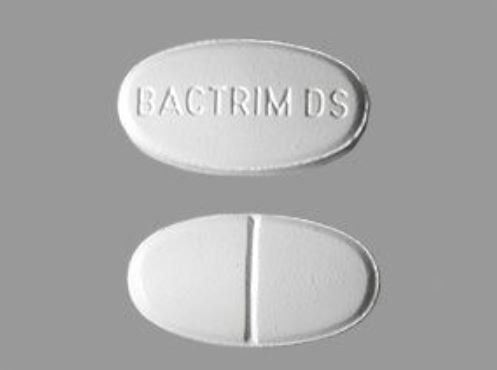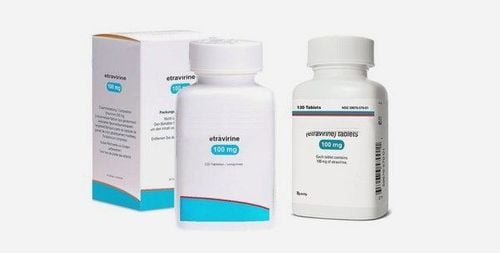This is an automatically translated article.
Viramune is an antiretroviral drug, used in HIV disease, with the main ingredient being Nevirapine anhydrous, 200mg content, made in tablet form. Prescription drugs are used only when prescribed by a doctor. So what is Viramune, how is it used in HIV disease?
1. What are the uses of Viramune?
Viramune xr is only used when prescribed by a doctor, the active ingredient Nevirapine is an HIV-I reverse transcriptase inhibitor called NNRTI. Nevirapine binds directly to the NNRTI enzyme, disrupting the enzyme's catalytic site by inhibiting the action of RNA-dependent polymerase and inhibiting DNA-dependent DNA polymerase.
The effect of the drug is not due to competition with the template or the nucleoside triphosphates. Nevirapine does not inhibit HIV-2 reverse transcriptase, nor does it inhibit eukaryotic DNA polymerases.
Drugs that inhibit HIV growth and replication at various stages of the HIV virus life cycle. Nevirapine is an anti-AIDS drug indicated for use in pregnant women with HIV and for newborns that can reduce the rate of HIV transmission from mother to child by about half. With this effect, the drug becomes the drug of choice to prevent mother-to-child transmission of HIV/AIDS in the developing world.
The drug is almost completely absorbed (>90%) after oral administration, absorption is not affected by food, antacids or drugs in formulations containing alkaline buffering agents. The drug is widely distributed in the body: nevirapine is bound to blood proteins, distributed in the cerebrospinal fluid, crosses the placenta and enters breast milk. The drug is excreted by the kidneys as metabolites, with urinary excretion having little role in the elimination of the primary nevirapine compound.
2. Indications and contraindications of Viramune
2.1. Indications Viramune is indicated in:
In the treatment of HIV infection, Viramune is used in combination with at least 2 other antiretroviral agents due to the rapid and uniform development of viral resistance when used alone. turn medicine Viramune. To prevent mother-to-child HIV infection, in pregnant women not receiving antiretroviral therapy contains high activity at the time of delivery. The drug is indicated and can be used as monotherapy with a single dose for the mother at the time of labor and a single oral dose for the baby at birth. If possible, the drug should be used in combination with other antiretroviral drugs for pregnant women before giving birth to minimize the possibility of mother-to-child transmission of HIV-1. 2.2. Contraindications Patients with hypersensitivity to Nevirapine or any of its excipients. The drug should not be used in patients with severe liver dysfunction or whose ASAT or ALAT before treatment is greater than 5 times the upper limit of normal. Do not use Viramune when liver function abnormalities reappear on re-treatment with the drug. The drug should not be re-administered in patients who have been permanently discontinued due to severe allergic rash, or accompanied by systemic symptoms, allergic hypersensitivity reactions, or subclinical hepatitis. due to drug use. Do not take herbal products containing St John's grass while taking the drug due to the risk of reducing blood levels of nevirapine, reducing the clinical therapeutic effect. Do not use the drug in case the patient has a rare genetic disease that may be incompatible with the excipients in the drug.
4. Dosage and how to take Viramune
How to use: Viramune is taken orally. The patient swallows the tablet whole, does not chew, break, or crush the tablet. Viramune can be taken at any time during meals, because food does not reduce the absorption of Nevirapine.
Dosage: The drug needs to be followed strictly according to the dosage instructions and usage from a professional doctor. The following is the recommended dosage and regimen when using Viramune:
Adults: Take 1 tablet once a day for the first 14 days, then take 2 tablets twice a day, 1 tablet each time, in combination with: other antiretroviral drugs. Children from 2 months to 8 years old: Dosage for 1 day is calculated according to the formula 4mg/kg, a single dose in the first 14 days, then increase to 7mg/kg x 2 times/day. Children 8 years and older: Take a single dose of 4mg/kg/day for 14 days, then increase to 4mg/kg twice a day. The total daily dose should not exceed 400mg for any patient. Dosage in prevention of mother-to-child transmission of HIV-1 infection: Dose for pregnant women: a single dose of 200mg should be used as soon as possible when there are signs of labor. Child dose: a single oral dose of 2mg/kg, administered within 72 hours of birth.
5. Undesirable effects of Viramune
Side effects when using Viramune can be encountered on many organ systems including:
Blood disorders: granulocytopenia, anemia indicators. Immune system: Drug rash with eosinophilia and systemic signs, anaphylaxis, allergic reactions angioedema, urticaria. Stomach and intestines: Disturbances such as lower abdominal pain, vomiting, nausea, diarrhea. Liver and biliary disorders: Hepatitis, fulminant hepatitis (including severe, life-threatening, possibly fatal hepatotoxicity), jaundice. On the skin and subcutaneous tissue: hypersensitivity syndrome, rash, Stevens-Johnson syndrome possibly fatal, angioedema, urticaria. Musculoskeletal disorders cause joint pain, muscle fatigue. Whole body, nervous system: Fever, headache, body fatigue. Laboratory tests: Liver function test disorder, increased liver enzymes AST, ALT, increased transaminase, decreased blood phosphorus, high blood pressure.
6. Notes when using Viramune
In the process of using Viramune, it should be noted:
If you are taking drugs: Ketoconazole, methadone and saquinavir, please inform your doctor so that he can consider how to choose a drug. Patients with impaired liver function, kidney function: before taking the drug, it is necessary to perform clinical chemistry tests of liver and kidney function and repeat at appropriate intervals during treatment. There is no antidote to nevirapine when patients overdose. The dose reported for overdose has been between 800-1,800mg per day for 15 days. Signs of overdose may include edema, fatigue, fever, erythema nodosum, headache, insomnia, nausea or vomiting, pulmonary infiltrates, dizziness, increased transaminases, weight loss. These symptoms will subside when the drug is stopped. Pregnancy: There is no adequate and well-controlled evidence that the drug is effective in pregnant women for the treatment of HIV-1 infection. Viramune should only be used during pregnancy if the potential benefit outweighs the risk to the fetus. The drug has been shown to be safe and effective in the indications for the prevention of mother-to-child transmission of HIV-1 infection with a single-dose regimen.
Breastfeeding: HIV-infected mothers should not breastfeed their babies to avoid the risk of HIV transmission after delivery. The mother needs to stop breastfeeding if she is taking the drug. Patients should be made aware that they may experience side effects such as fatigue during treatment with the drug. Therefore, patients need to be careful and avoid risky activities such as driving, operating machinery, or operating equipment if they are tired. Above is information about Viramune drug. The drug is effective in the treatment and prevention of HIV in many different populations. This is a prescription drug and should be used strictly according to the protocol from a specialist doctor, the patient needs to adhere to the treatment. If you have questions about Viramune, please contact or directly meet your doctor/pharmacist for examination and advice.
Follow Vinmec International General Hospital website to get more health, nutrition and beauty information to protect the health of yourself and your loved ones in your family.
Please dial HOTLINE for more information or register for an appointment HERE. Download MyVinmec app to make appointments faster and to manage your bookings easily.













